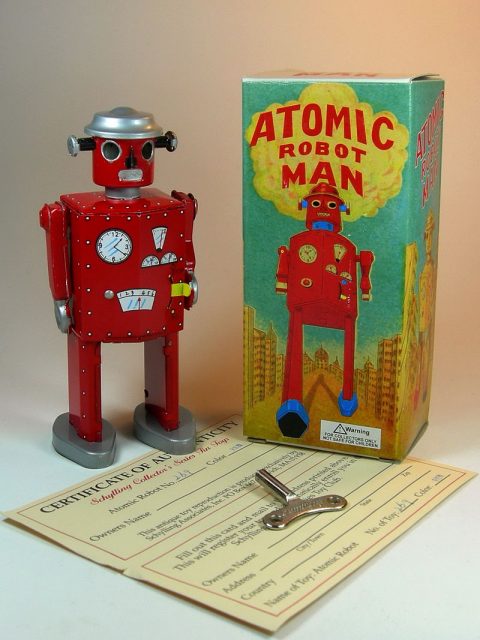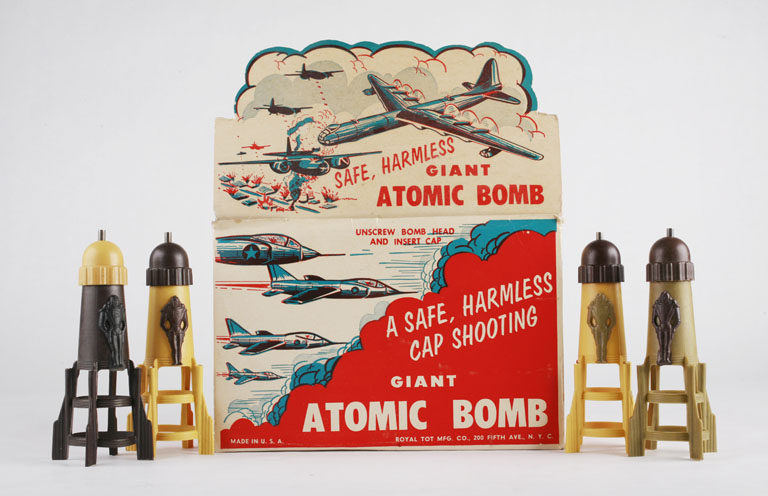Gone are the days when people were totally oblivious of the dangerous effects of radiation exposure when it was something exciting. To them, radiation had the power to make things glow and could even improve one’s health. We’ve learned the hard way that not everything that glitters is gold and that radiation exposure and nuclear power pose a threat to people’s health. However, few would agree with this claim back in the 1950s when nuclear optimism started flourishing around the globe and penetrated every sphere of people’s lives.
Advances in the field of nuclear physics massively changed the way people lived. While some people thought of nuclear power as a terrifying threat, many others shared a great nuclear optimism, celebrating the fact that everything will be “nuclear” in the future. From cheap electricity to water for the thirsty and food for the hungry, nuclear optimism of the Atomic Age seemed to have no limits.
As it turned out, not everything about nuclear energy was positive. The nuclear power industry grew rapidly in the 1950s, causing numerous environmental problems and tensions in international relations and diplomacy.

During the 1950s, there was a trend in nuclear-inspired designs and concepts. Many companies envisioned things like nuclear-powered clocks, vehicles, home appliances, and even some radioactive consumer products such as toothpaste, lipstick, and cigars. Apparently, the toy industry had a few ideas of its own.

Exposing kids to radiation seemed not only harmless but even desirable. A lot of the toys made in the 1950s were named “atomic” just to sound cool, but some of the manufacturers went further and included radioactive elements in their products.
One such product was the Gilbert No. U-238 Atomic Energy Lab. Released for the first time in 1951, this nuclear physics educational set is best remembered for being arguably the most dangerous children’s toy ever produced.

Among other things, the set included a Geiger counter, electroscope, spinthariscope, a Wilson Cloud Chamber, instruction book, and, most importantly, radioisotopes. Playing with uranium ore back in the 1950s was not something that everyone could afford as it was quite pricey. Namely, owning a Gilbert No. U-238 Atomic Energy Lab in 1951 would cost someone’s parents $49.50 (over $500 in today’s money). The manual, which was included in the set, promised that the government would reward $10,000 to anybody who discovers deposits of uranium ore. A really neat and “slightly” radioactive toy.

One of the best ways for a 1950s kid to learn how to stop worrying and love the bomb was the vintage children’s toy described by its manufacturer as a “safe, harmless, giant atomic bomb.” Don’t worry, it’s nothing dangerous, just some toy rockets with exploding tips, similar to the snap banger in cap guns, that children could throw at each other on the street. It informed parents that the toy did not contain any radioactive materials. Children could buy a single bomb or an entire arsenal if they wished so.
Parents who worry that a toy they purchase today might contain toxic chemicals, brace yourselves. Such chemicals existing in children’s toys are nothing compared to the radioactive 1947 Lone Ranger Atomic Bomb Ring, a Kix cereal promotion. According to the advertising, this toy was a “seething scientific creation” and the instructions stated that once you owned it, you would be able to see “the thrilling spectacle of atomic energy in action.”

“You’ll see brilliant flashes of light in the inky darkness of the atom chamber. These frenzied vivid flashes are caused by the released energy of atoms.” The manufacturer also promised that the radioactive isotope inside the toy was harmless to children, but still, the idea of exposing your kid to it gives one pause.
Back in the time when uranium was considered to be the new gold and uranium prospectors were all over the United States, Gardner Games created the “Uranium Rush” board game.
This game allowed players to put themselves in the role of uranium prospectors and gather a lot of money from the deposits they discover on the map. The game was battery operated and of a similar design to electric quiz games from the mid 20-century. There was also a cardboard Geiger counter included in the kit with which you could find uranium on the map.
Another creepy toy of the Atomic Age was the Atomic Robot Man, one of the earliest toy robots ever manufactured. Originally produced in post-war occupied Japan in the late 1940s, the Atomic Robot Man nowadays has a very special appeal to collectors, and originals are really hard to find.
